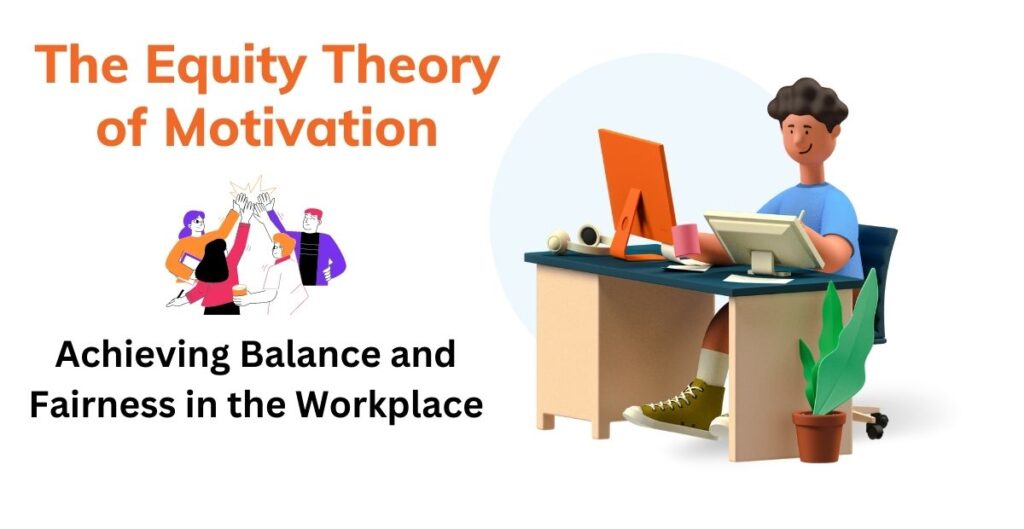Motivation is crucial in the workplace, driving employees to give their best effort. So many theories have emerged to understand what truly motivates individuals.
One such theory is the Equity Theory of Motivation, developed by J. Stacy Adams in the 1960s. This theory highlights the significance of fairness and balance at work, stating that people are motivated when they perceive fairness in how rewards and resources are distributed.
In this article, I will analyze the core principles and practical applications of the Equity Theory of Motivation. In the end, its impact on employees and organizations will be discussed.
Principles of the Equity Theory of Motivation
At the core of the Equity Theory of Motivation lies the belief that individuals strive for fairness and equality in their social exchanges.
Adams claims that people compare their contributions such as effort, competence, experience, and output such as pay, accolades, and benefits with their peers, coworkers, or the organization as a whole.
This comparison leads to the formation of a perception of equity or inequity.
Equity is achieved when an individual perceives their ratio of inputs to outcomes as equal to that of their referent, someone they consider to be a comparable other. This balance fosters a sense of fairness, satisfaction, and motivation.
On the other hand, inequity arises when there is a perceived imbalance in the ratio of inputs to outcomes.
Inequity can manifest in two forms:
1. Underpayment inequity occurs when an individual perceives that their ratio of inputs to outcomes is lower than that of their referent. As a result, this comparison process can evoke emotions like anger and resentment, ultimately leading to a decline in motivation.
2. Overpayment inequity arises when an individual perceives that their ratio of inputs to outcomes is higher than that of their referent. While this may initially result in guilt, it can ultimately lead to a decrease in motivation as individuals strive to restore balance.
Must Read Guide– Maslow’s Hierarchy of Needs Theory: Climbing the Pyramid
Applications of the Equity Theory of Motivation
The Equity Theory has important implications for the workplace as it helps us understand the factors that impact employee motivation, job satisfaction, and engagement.
By understanding and applying the principles of the Equity Theory, organizations can create a work environment that fosters fairness and ultimately improves overall performance.
Here are a few key applications of the Equity Theory:
- Compensation and Benefits
- Performance Evaluation
- Promotion and Career Development
- Team Dynamics
- Employee Engagement
1. Compensation and Benefits
Employees often evaluate their compensation packages based on the inputs they contribute and the outcomes they receive. Organizations must ensure that pay structures are perceived as fair and equitable. Inequities can be addressed by adjusting salaries, offering additional benefits, or providing performance-based rewards.
2. Performance Evaluation
Fair and transparent performance evaluations are crucial to maintaining equity. Managers should assess and reward employees based on objective criteria, ensuring that those who contribute more receive appropriate recognition and rewards. This helps prevent underpayment inequity and encourages high performers.
3. Promotion and Career Development
Opportunities for growth and advancement should be allocated fairly, considering an individual’s skills, experience, and performance. Managers should provide clear guidelines and transparent processes to avoid perceptions of inequity and favoritism.
4. Team Dynamics
Teams can be highly influenced by the Equity Theory. If some team members perceive inequity, it can lead to reduced cooperation, trust, and collaboration. Managers must promote a sense of fairness within teams, fostering an environment where everyone feels valued and rewarded appropriately.
5. Employee Engagement
Organizations that prioritize equity and fairness tend to have higher levels of employee engagement.
When people observing their hard work is acknowledged and fairly rewarded, they tend to feel more motivated, satisfied, and committed to their job.
Must Read Guide- Herzberg’s Two-Factor Theory: Understanding Motivation in the Workplace
Impact of the Equity Theory of Motivation
The Equity Theory has a profound impact on both employees and organizations. When individuals perceive equity, they experience positive outcomes such as job satisfaction, engagement, and commitment. Conversely, perceptions of inequity can lead to negative consequences.
Here are some key points to make it easier-
- Employee Well-being
- Turnover and Retention
- Organizational Culture
- Productivity and Performance
- Conflict Resolution
1. Employee Well-being
A fair and equitable work environment promotes psychological well-being. When Employees feel that their efforts are valued and adequately rewarded, they are more satisfied with their job, decreased stress levels, and improved mental health
2. Turnover and Retention
Inequity can contribute to increased turnover rates. Employees who perceive unfairness are more likely to seek employment elsewhere, searching for a fairer work environment. Equity-focused organizations are better able to draw in and keep talented personnel.
3. Organizational Culture
The Equity Theory influences the overall organizational culture. If equity is fostered and perceived as a core value, it can create a positive culture that promotes trust, collaboration, and fairness. This, in turn, enhances teamwork, productivity, and innovation.
4. Productivity and Performance
When employees feel motivated, they are inclined to dedicate their energy and skills to their work, resulting in enhanced productivity and performance.
When individuals perceive fairness in the workplace, they are driven to contribute their best efforts, positively impacting organizational outcomes.
5. Conflict Resolution
The Equity Theory provides a framework for understanding and resolving conflicts that arise from perceived inequity. By addressing and rectifying inequities, organizations can minimize conflicts, maintain positive relationships, and improve overall employee satisfaction.
Conclusion
The Equity Theory of Motivation offers valuable insights into the importance of fairness and balance in the workplace. By understanding the principles of equity, organizations can create an environment that motivates and engages employees. By ensuring fair compensation, transparent performance evaluations, and opportunities for growth, organizations can foster a culture of equity that promotes employee satisfaction, productivity, and retention.
In a highly competitive and dynamic business world, organizations can not only benefit individuals but also contribute to the overall success of the firm by embracing the ideas of the equity theory.
let me share with you what you have learned from “The Equity Theory of Motivation: 5 Key Points “

